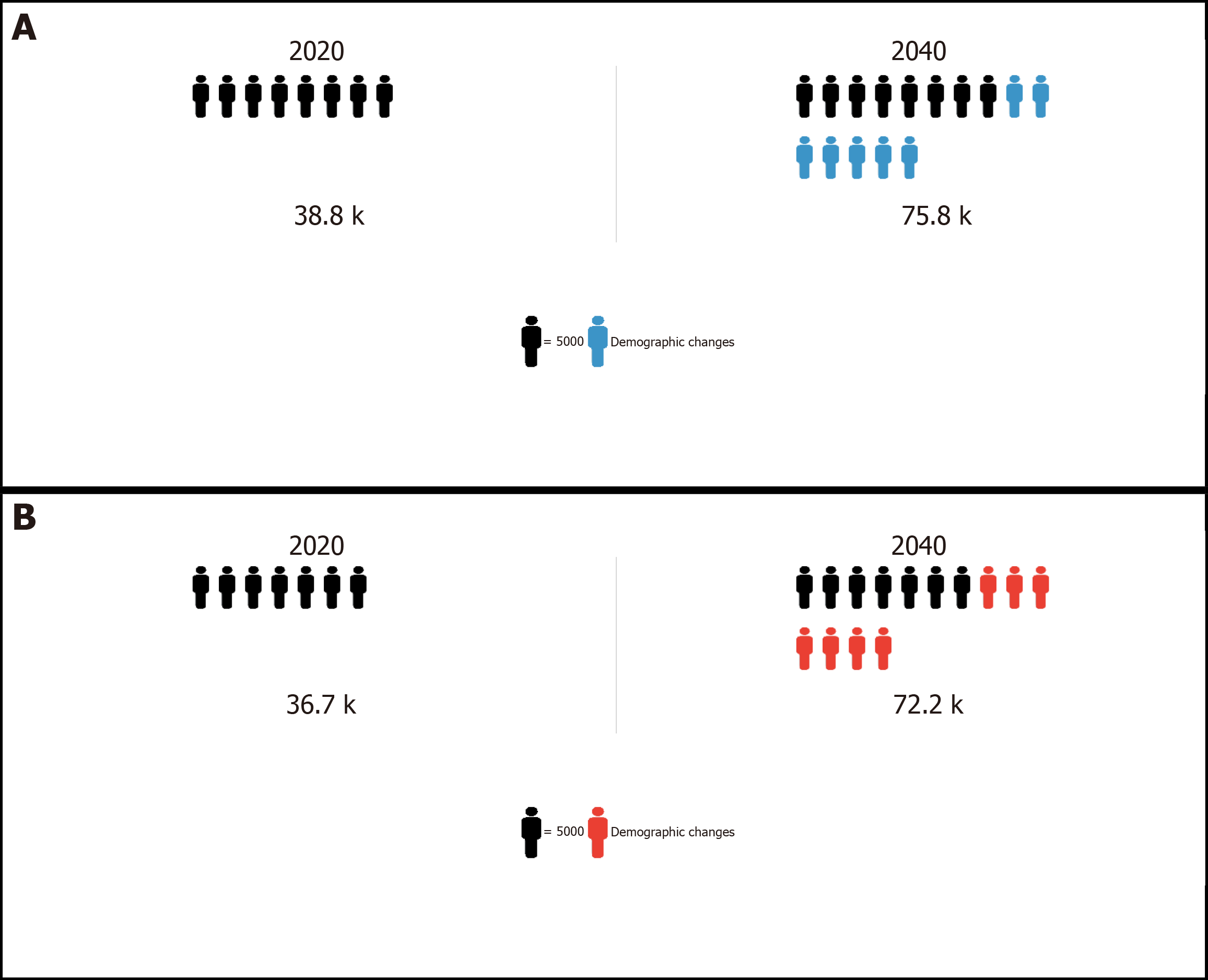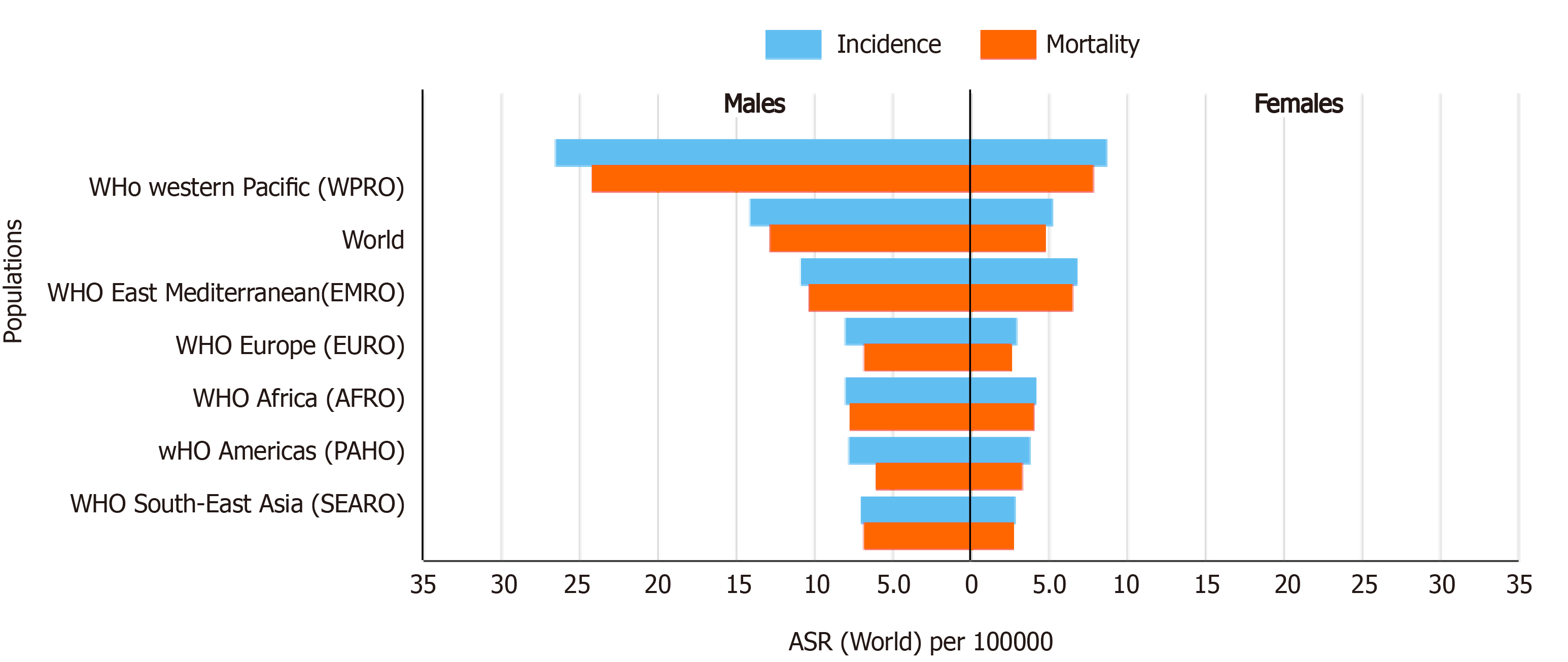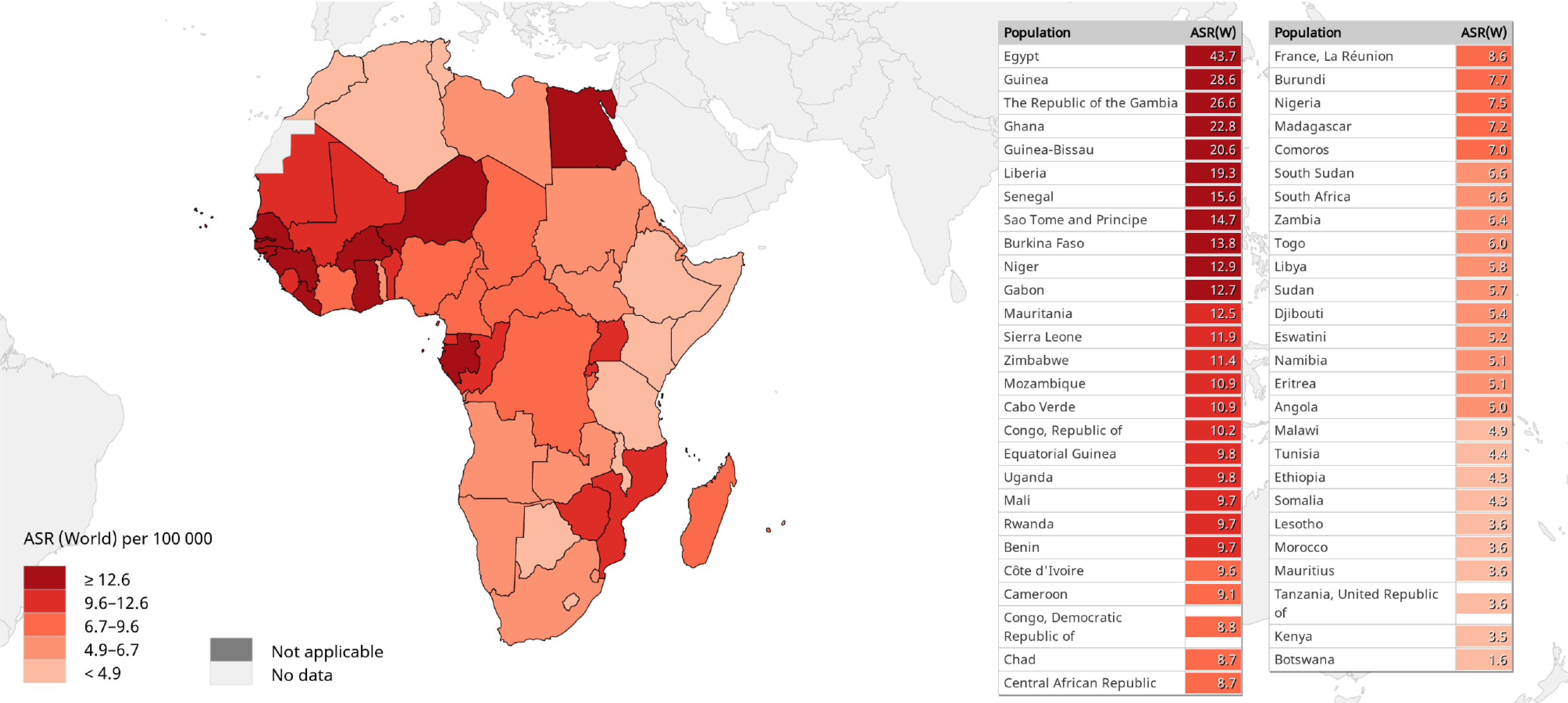Copyright
©The Author(s) 2021.
World J Gastroenterol. Sep 28, 2021; 27(36): 6025-6038
Published online Sep 28, 2021. doi: 10.3748/wjg.v27.i36.6025
Published online Sep 28, 2021. doi: 10.3748/wjg.v27.i36.6025
Figure 1 Projected increase in estimated number of cases and deaths due to cancers of the liver and intrahepatic bile ducts within sub-Saharan Africa from 2020 to 2040[67,76,77].
GLOBOCAN 2020 (https://gco.iarc.fr/). A: Estimated number of cases from 2020 to 2040, both sexes, age (0-85+); B: Estimated number of deaths from 2020 to 2040, both sexes, age (0-85+).
Figure 2 Estimated age-standardized liver cancer incidence and mortality rates per 100000 persons per year shown worldwide in 2020[2,67,78].
GLOBOCAN 2020 (https://gco.iarc.fr/). WHO: World Health Organization; ASR: Liver cancer age standardized incidence rate.
Figure 3 Estimated age-standardized liver cancer incidence rates per 100000 persons per year in males in Africa (2020)[2,67,78].
GLOBOCAN 2020 (https://gco.iarc.fr/). The designations employed and the presentation of the material in this publication do not imply the expression of any opinion whatsoever on the part of the World Health Organization/International Agency for Research on Cancer concerning the legal status of any country, territory, city, or area or of its authorities, or concerning the delimitation of its frontiers or boundaries. Dotted or dashed lines on maps represent approximate borderlines for which there may not yet be full agreement.
Figure 4 Estimated age-standardized liver cancer mortality rates per 100000 persons per year in males in Africa (2020)[2,67,78].
GLOBOCAN 2020 (https://gco.iarc.fr/). The designations employed and the presentation of the material in this publication do not imply the expression of any opinion whatsoever on the part of the World Health Organization/International Agency for Research on Cancer concerning the legal status of any country, territory, city, or area or of its authorities, or concerning the delimitation of its frontiers or boundaries. Dotted or dashed lines on maps represent approximate borderlines for which there may not yet be full agreement.
- Citation: Amponsah-Dacosta E. Hepatitis B virus infection and hepatocellular carcinoma in sub-Saharan Africa: Implications for elimination of viral hepatitis by 2030? World J Gastroenterol 2021; 27(36): 6025-6038
- URL: https://www.wjgnet.com/1007-9327/full/v27/i36/6025.htm
- DOI: https://dx.doi.org/10.3748/wjg.v27.i36.6025












